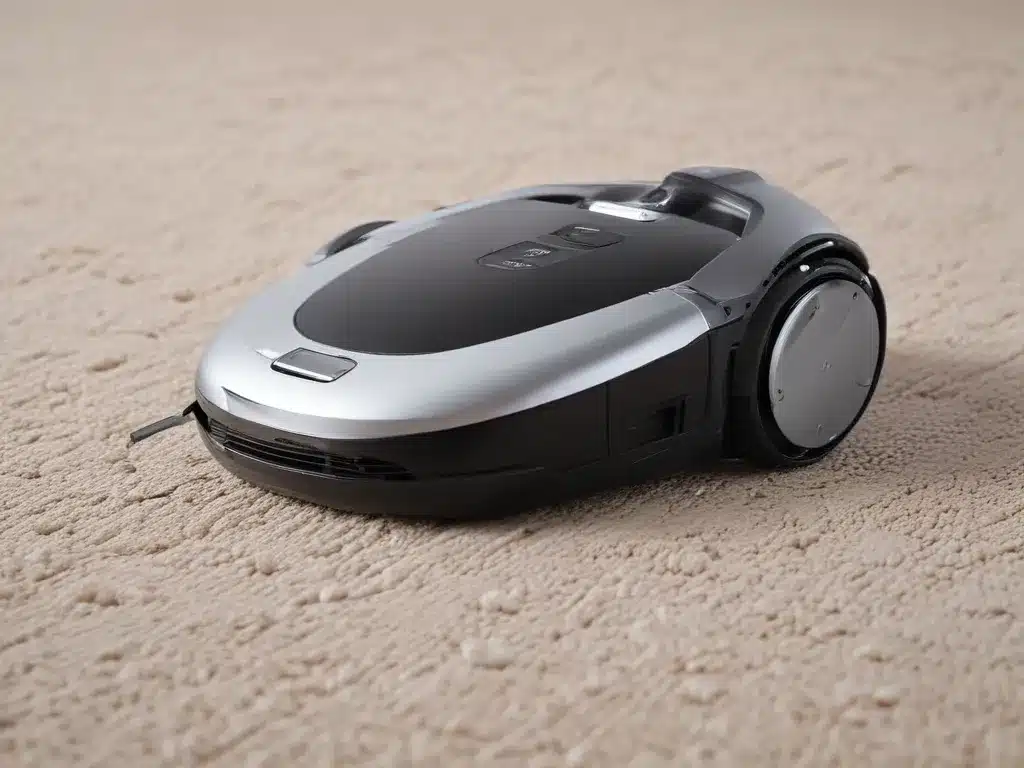Introduction
Robotic vacuums have come a long way since their inception in the late 20th century. These autonomous cleaning devices have evolved from novelty gadgets to practical household helpers, capable of performing thorough cleaning tasks with minimal human intervention. In this article, I will delve into the remarkable advancements in robotic vacuum technology, exploring their features, capabilities, and the impact they have had on our lives.
The Early Days of Robotic Vacuums
In the 1990s, the concept of robotic vacuums was a futuristic idea, reserved for science fiction movies and the imaginative minds of engineers. However, it wasn’t until the early 2000s that the first commercially viable robotic vacuum cleaners hit the market. Companies like iRobot and Electrolux paved the way with their pioneering models, introducing consumers to the convenience of automated floor cleaning.
The initial robotic vacuums – were basic and limited in their functionality. They relied on random navigation patterns and simple sensors to navigate around rooms and obstacles. While they could clean floors to some extent, their performance was often inconsistent, and their suction power left much to be desired.
Advancements in Navigation and Mapping
As technology progressed, robotic vacuums underwent significant improvements in their navigation capabilities. Manufacturers began incorporating advanced sensors, such as laser rangefinders and camera-based mapping systems, allowing these devices to create detailed maps of their surroundings. This enabled them to navigate more efficiently, avoiding obstacles and covering every inch of the floor with precision.
Moreover, the introduction of simultaneous localization and mapping (SLAM) algorithms revolutionized robotic vacuum navigation. These algorithms allowed the vacuums to create real-time maps of their environment, enabling them to track their position accurately and plan the most efficient cleaning routes.
Improved Suction Power and Cleaning Performance
Early robotic vacuums struggled with suction power, often leaving behind debris and failing to pick up larger particles. However, advancements in motor technology and battery life have significantly improved their cleaning capabilities. Modern robotic vacuums boast powerful suction and advanced brush systems, enabling them to tackle carpets, hardwood floors, and even pet hair with ease.
Additionally, manufacturers have introduced specialized cleaning modes, such as spot cleaning and edge cleaning, allowing robotic vacuums to target specific areas or navigate along walls and edges for a more thorough cleaning experience.
Smart Home Integration and Voice Control
One of the most significant advancements in robotic vacuum technology has been their integration with smart home systems and voice control assistants. Many robotic vacuums now seamlessly connect with popular voice assistants like Amazon Alexa and Google Assistant, allowing users to control and schedule cleaning sessions with simple voice commands.
Furthermore, robotic vacuums can be integrated into larger smart home ecosystems, enabling them to work in harmony with other connected devices and appliances. For instance, a robotic vacuum can automatically start cleaning when a smart thermostat detects that the homeowner has left the premises.
Self-Emptying and Automatic Dirt Disposal
A common complaint about early robotic vacuums was the need to manually empty their small dust bins after each cleaning session. However, recent innovations have addressed this issue with the introduction of self-emptying and automatic dirt disposal systems.
Some robotic vacuums now come equipped with a docking station that automatically empties the vacuum’s dustbin into a larger container, eliminating the need for frequent manual emptying. This not only saves time and effort but also ensures that the vacuum is always ready for its next cleaning cycle.
Advanced Sensor Technology and Object Recognition
Robotic vacuums have also benefited from advancements in sensor technology and object recognition capabilities. Modern models can detect and avoid obstacles, such as furniture, toys, and pet bowls, with greater accuracy, reducing the risk of collisions and ensuring a safer cleaning experience.
Additionally, some robotic vacuums now incorporate cameras and artificial intelligence (AI) algorithms to identify and map out specific objects in their surroundings. This allows them to clean around and under furniture more effectively, ensuring a more thorough cleaning experience.
Increased Battery Life and Efficiency
One of the biggest challenges faced by early robotic vacuums was their limited battery life, often requiring frequent recharging and interrupting cleaning sessions. However, advancements in battery technology and power management have significantly improved their runtime and efficiency.
Modern robotic vacuums can run for several hours on a single charge, allowing them to clean larger areas without interruption. Additionally, some models feature intelligent charging systems that automatically return the vacuum to its docking station when the battery is running low, ensuring it is always ready for the next cleaning cycle.
Multi-Surface Cleaning and Mopping Capabilities
While early robotic vacuums were primarily designed for carpets and hardwood floors, recent models have expanded their capabilities to handle a variety of surfaces. Some robotic vacuums now feature interchangeable brushes and cleaning modes specifically designed for different floor types, ensuring optimal cleaning performance on various surfaces.
Furthermore, manufacturers have introduced hybrid models that combine vacuuming and mopping capabilities, allowing these devices to not only clean carpets and hard floors but also mop tile, stone, and laminate surfaces, providing a truly comprehensive cleaning solution.
Conclusion
Robotic vacuums have come a remarkably long way since their inception. From simple, random navigation patterns and limited suction power, they have evolved into sophisticated cleaning machines capable of mapping environments, navigating efficiently, and delivering thorough cleaning performance.
With advancements in sensor technology, object recognition, smart home integration, and self-emptying systems, robotic vacuums have become indispensable household assistants, saving time and effort while ensuring a consistently clean living environment.
As technology continues to progress, it is exciting to imagine the further advancements that robotic vacuums will undergo, potentially incorporating even more advanced features and capabilities to make our lives easier and our homes cleaner.







